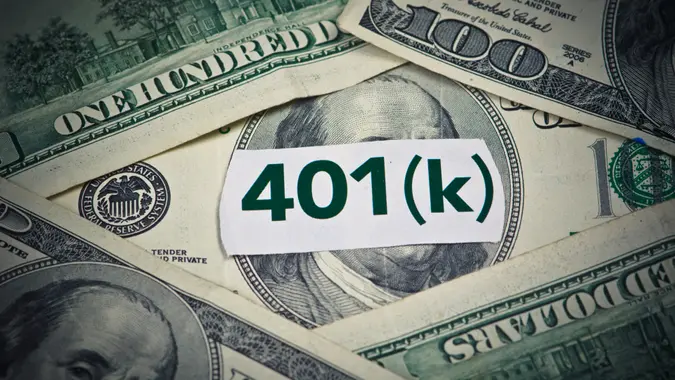The Best Money You Can Spend To Ensure a Stress-Free Retirement in 2025

Commitment to Our Readers
GOBankingRates' editorial team is committed to bringing you unbiased reviews and information. We use data-driven methodologies to evaluate financial products and services - our reviews and ratings are not influenced by advertisers. You can read more about our editorial guidelines and our products and services review methodology.

20 Years
Helping You Live Richer

Reviewed
by Experts

Trusted by
Millions of Readers
If you plan to retire in 2025, time is running short to get your finances ready for the next stage of your life. You might think of this as a time to rein in spending and you’d be right — to a point. Some spending can actually protect your savings so you can retire stress-free.
Professional Retirement Planning
There’s no substitute for the guidance of a professional financial planner who can verify that your savings are on track to outlive you — or identify gaps and provide solutions for filling them.
The services don’t come cheap. A fee-based certified financial planner (CFP) charges either an hourly rate to analyze your finances and create a plan or a percentage of the assets they manage for you. Hourly rates average between $120 and $300 per hour, according to the advisory firm Harness. Percentage fees typically run from 0.50% to 2%, depending on the value of the assets.
The fees could be worth their weight in gold if the planner finds ways to increase the value of your assets, make your money last longer and reduce your tax burden. In the meantime, you’re relieved of the day-to-day responsibilities of managing your money and any uncertainty around where you stand.
Paying Off Credit Cards
Of retirees who had debt in 2024, 68% had outstanding credit-card debt, according to the 2024 Spending in Retirement Study by the Employee Benefits Research Institute (EBRI). With rates averaging over 21% — according to Federal Reserve Economic Data (FRED), your debt could cost you thousands of dollars in interest.
For example, a $7,000 balance at 21% interest takes over four years to repay and costs nearly $3,600 in interest if you pay the interest plus 3% of the balance each month. That’s $3,600 that could be helping to secure your retirement rather than jeopardize it.
Emergency Savings
The EBRI report found that just 59% of retirees have three months of emergency savings, yet 36% have had unexpected expenses since they retired.
Many people create emergency funds so they have income to fall back on if they lose their jobs. That makes sense even if you’re retiring this year, if losing your job before your scheduled retirement date would cause a hardship.
Emergency savings could be even more important after you leave the workforce. A major home repair or medical expense at this stage of your life can deplete your retirement savings early or land you in expensive debt if you don’t have cash set aside to cover the cost.
Kevin Lao, financial planner and the founder of Imagine Financial Security, told AARP that he recommends having six to nine months of expenses in your emergency fund. Consider keeping the money in a high-yield savings account, where it’ll be immediately accessible and earn a decent rate of return.
Annuity
An annuity is a type of insurance contract. You pay a premium, either as a lump sum or in payments and the insurance company makes payments to you. You can receive the payments for a set period of time or for the rest of your life. Some annuities also provide death benefits, so they can be a valuable estate-planning tool as well as a way to ensure a certain level of fixed income during your lifetime.
Annuities are complicated instruments and commissions and fees can be high. Consider consulting with a fee-based financial advisor or a tax professional before you purchase one.
More From GOBankingRates
- Nearly 1 in 3 Americans Hit by a Costly Holiday Scam, Norton Survey Shows -- How To Avoid This
- Here's What the Average Social Security Payment Will Be in Winter 2025
- How Middle-Class Earners Are Quietly Becoming Millionaires -- and How You Can, Too
- The Easiest Way to Score $250 for Things You Already Do
 Written by
Written by  Edited by
Edited by 

























